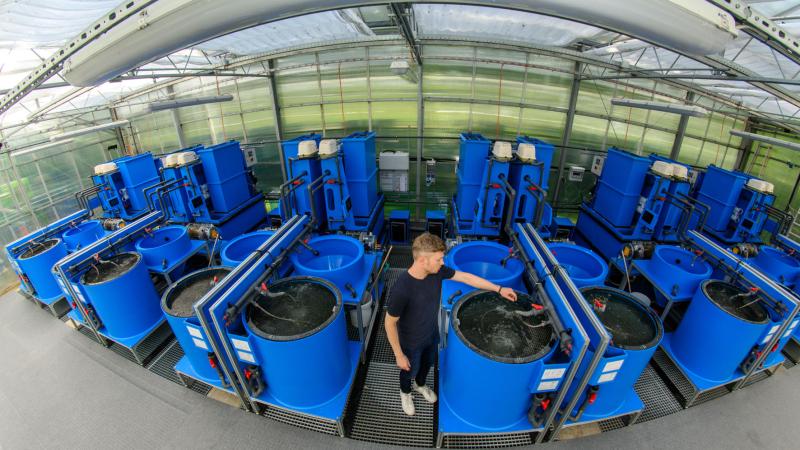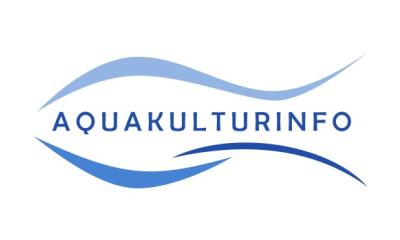Aquaculture and aquaponics
Fish is an important source of protein for millions of people throughout the world. And yet the world’s natural occurrences are unable to meet the rapidly growing demand for fish. Breeding fish in aquaculture may help to protect natural resources and ecosystems, while improving food security. However, this is only possible if conducted within sustainable aquaculture: environmental, economic and social aspects must be taken into account equally. With regard to this triad, at IGB we explore aspects such as resource-saving and efficient production, animal welfare and alternative therapeutics, organic feed and self-sufficiency concepts. The aquaponics system developed at IGB, known as Tomato-Fish, is particularly resource-saving: combined fish and vegetable farming saves water, energy, artificial fertiliser and space, and considerably reduces emissions in food production. We also use our expertise in fish genetics and reproduction to protect species. We communicate our research topics and results to different stakeholders and practice partners in a targeted manner, ensuring that our scientific findings are transferred to practice* without delay.
Related News
Selected publications
A duplicated copy of id2b is an unusual sex-determining candidate gene on the Y chromosome of arapaima (Arapaima gigas)
The Arapaima is an endangered species of interest for sustainable aquaculture. The authors published an improved genome sequence and identified a Y-linked candidate gene for sex determination in males. A PCR test enables genotyping as a new tool for breeding and conservation of the Arapaima. It has already been used to distinguish males from females at the IGB as well.
Fulvic acid accelerates hatching and stimulates antioxidative protection and the innate immune response in zebrafish larvae
Improving growth and health parameters by immunostimulants is widely used in older fish, but rarely studied in larvae. Using zebrafish as a model organism, the authors evaluated the effects of exposure to fulvic acids (FAs) on embryonic development. They showed that FA at low to medium concentrations can increase the health of larvae, but becomes detrimental at higher concentrations.
Phenol-rich fulvic acid as a water additive enhances growth, reduces stress, and stimulates the immune system of fish in aquaculture
The study showed that immunostimulation via gills is possible with fulvic acid, and the high phenolic content improved overall health and stress resistance of fish.
The sterlet sturgeon genome sequence and the mechanisms of segmental rediploidization
Researchers have succeeded in sequencing the sturgeon genome, delivering a missing piece of the puzzle essential to understanding the ancestry of vertebrates. The genetic material of the sterlet has undergone very little change over the past 300 million years or more.















